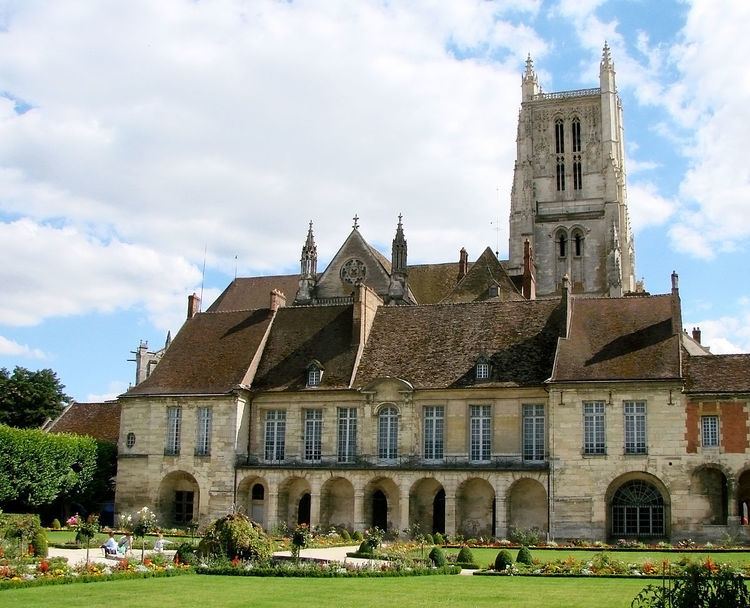Established 1927 | Website www.musee-bossuet.fr | |
 | ||
Collection size Paintings, sculpture and decorative arts Address 5 Place Charles de Gaulle, 77100 Meaux, France | ||
Mus e bossuet
The Musée Bossuet is the art and history museum of the town of Meaux, France. Situated in the old episcopal palace, it takes its name from the famous orator and theologian Jacques-Bénigne Bossuet, Bishop of Meaux from 1681 to 1704.
Contents
- Mus e bossuet
- Le mus e bossuet de meaux
- The episcopal palace
- Garden
- Collections
- Access ramp Bishops of Meaux
- Rooms 1 and 2 Mannerism
- Rooms 3 and 4 Classical period
- Rooms 5 and 6 Eighteenth century
- Room 7 Bossuet
- Rooms 8 and 9 The nineteenth century
- References
Le mus e bossuet de meaux
The episcopal palace
Built in the twelfth century around 1160, then rebuilt in the seventeenth century, the episcopal palace architecturally is a mix of medieval and Renaissance styles. The most interesting example of eighteenth century work is the south facade of the palace, built of brick and stone, with large cross windows. The north facade is also representative of the Grand Siècle style. The lower rooms of the palace are the oldest, dating from the second half of the twelfth century. The low and high chapels also date from this time, but were expanded and redesigned in the fifteenth century.
Garden
The Bossuet garden is beside the episcopal palace. It is a formal garden in the French style with the shape of a miter. The garden was created in the seventeenth century during the episcopate of Dominique Séguier. It took the name of the great prelate in 1911, when it was opened to the public as a city park. On crossing it one reaches the study of Jacques-Bénigne Bossuet.
Collections
The episcopal palace houses collections of paintings and sculptures, as well as items of local history. The collections have expanded thanks to the legacy of the chemist and collector Henri Moissan in 1914 and, more recently, thanks to the donation of neuro-biologist Jean-Pierre Changeux. He enriched the museum with forty works, of which the last entered the collection in 2006. Different schools of painting are shown from the sixteenth to the twentieth centuries.
Access ramp: Bishops of Meaux
There are many pictures of the successive Bishops of Meaux along the access ramp.
Rooms 1 and 2: Mannerism
Rooms 3 and 4: Classical period
Rooms 5 and 6: Eighteenth century
Room 7: Bossuet
The memory of Bishop Bossuet of Meaux (1682-1704) is evoked by his portraits by Hyacinthe Rigaud and after Pierre Mignard gathered in his old study.
